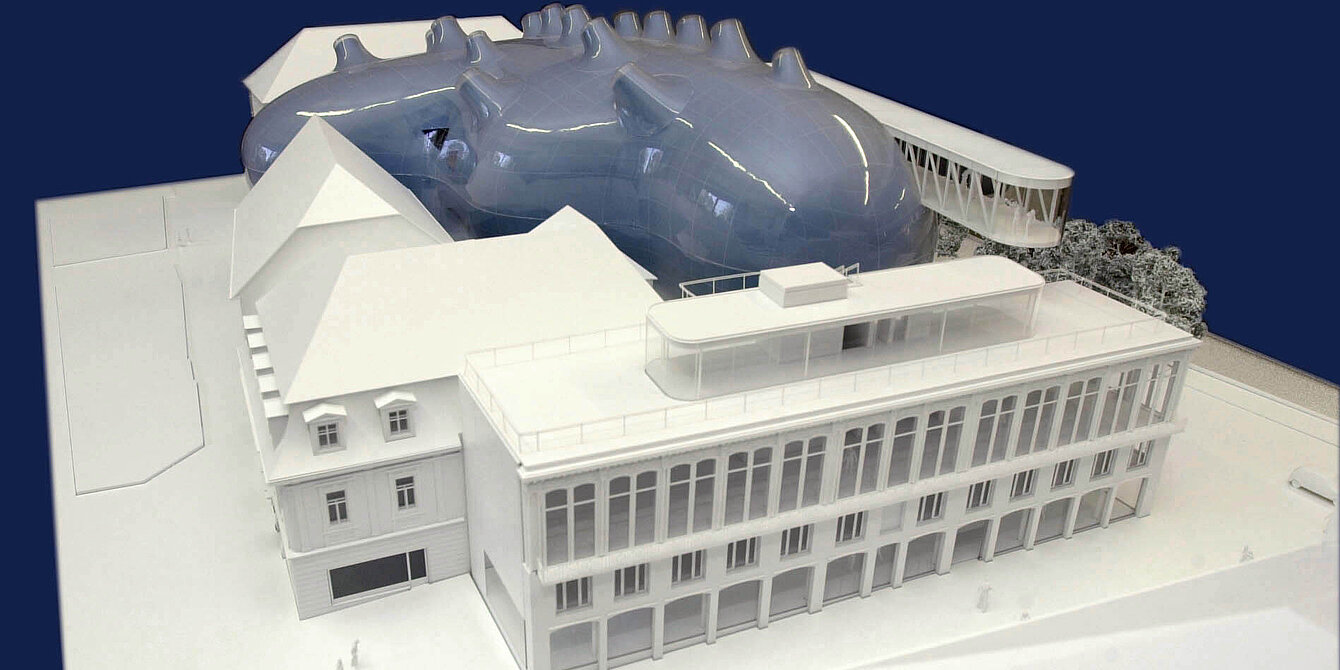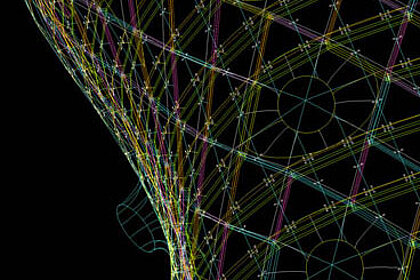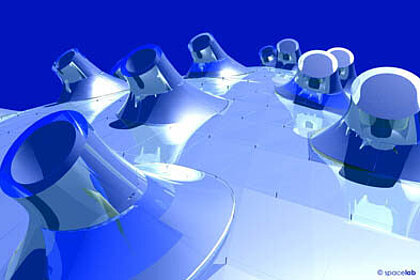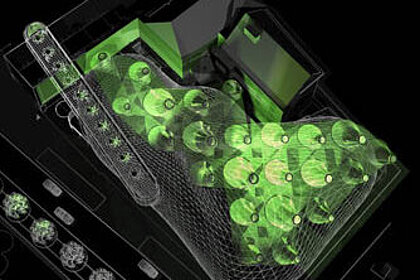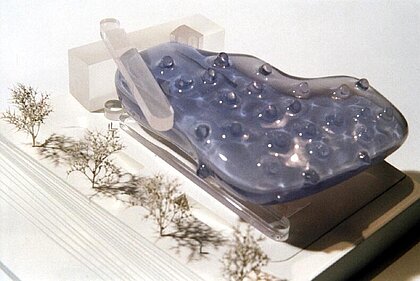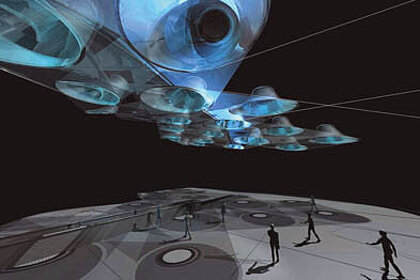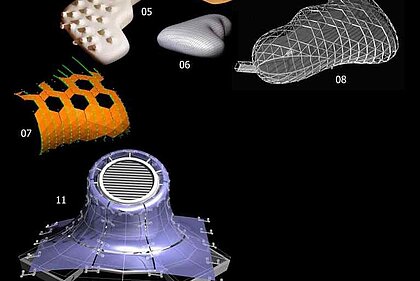Colin Fournier: The Friendly Alien
In: Curves and Spikes, catalogue for the exhibition titled “Curves and Spikes”, Aedes Gallery in Berlin
The first and most pertinent question that comes to mind when designing a new museum is: what kind of art will it contain?
The particularity of the Kunsthaus Graz is that it is not intended to house a permanent collection. There are many other museums in Graz that can do that. The contents of the museum will change constantly. It has, in effect, no substance, its contents remain a mystery and this has profound implications on the design of the building.
Freed from the obligation to fit its form to any particular function, the design has two options:
- either to develop a distinctive and highly idiosyncratic form of its own and to playfully celebrate its own iconic image, such as Frank Gehry’s Guggenheim museum in Bilbao, or to adopt
- the self-effacing stance of the well serviced anonymous shed that inconspicuously services its string of successive tenants.
The Kunsthaus seems to belong firmly in the first category, and yet it does so with a twist: it proclaims its own artistic singularity, yet it is also a high-tech machine offering a flexible environment to its users. Its appearance is highly memorable but it is a malleable one and will always retain an element of surprise: the outer appearance of its skin can, within limits, be changed electronically and its internal spaces constitute a “black box” of hidden tricks to be left in the hands of various curators. Each time one is sucked into the internal cavity of the Kunsthaus by the slow moving Travelator reaching up into its belly, one will in effect be exposed to a different spatial and sensorial experience, to a different building.
The genealogy of the project’s biomorphic form lies in its designers’ long standing fascination with the animal presence of architecture and in the chequered history of the competition for the Kunsthaus, which was originally intended to inhabit a large cavity within the Schlossberg, the hill that stands in the centre of the city. The approach adopted by the authors at the time was to line this rocky cavity with an organically shaped membrane filling its complex and rough internal contours and to allow this membrane to protrude out of the mountain and into the city, like the tail or tongue of a dragon. When the location of the museum was changed to its current site along the Mur, the dragon skin found its way across the river, flowed into the irregular geometric boundary of the new site and wrapped itself around the two elevated decks of the museum, forming an environmental enclosure that resembles neither roofs nor walls nor floors but a seamless morphing of the three.
The smoothness of the building’s resultant double curved surfaces has gentle and cuddly connotations which, combined with the peculiar nature of its nozzles, its multiple snouts and eyes, have led to the building’s “friendly Alien” nickname. Indeed, the building seeks, through its appearance and modus operandi, to be a friendly institution that is easily accessible to the public and adopted by the people of Graz as a strange but familiar part of the normal life of the city.
In terms of urban design, the building is intended to have a major impact on the regeneration of the western half of the city which has until now been relatively underprivileged compared to the eastern side which contains the major public buildings, universities and museums. Cultural institutions, particularly museums of modern art, have the remarkable ability, if made appealing to the public, such as the Pompidou centre in Paris, the Guggenheim in Bilbao or the Tate Modern in London - also located on the “wrong” side of the river - of acting as powerful catalysts of change and symptoms of this urban transformation are already noticeable.
The exhibition at the Aedes gallery and the catalogue that accompanies it have been used as an opportunity to reveal, at least partially, the complex anatomy of the building, peeling it layer by layer like an onion, while leaving, hopefully, its playful aura and intrinsic mystery intact.'
Extracts from the text of the catalogue published by the Aedes Gallery in Berlin for the exhibition titled “Curves and Spikes”.




















